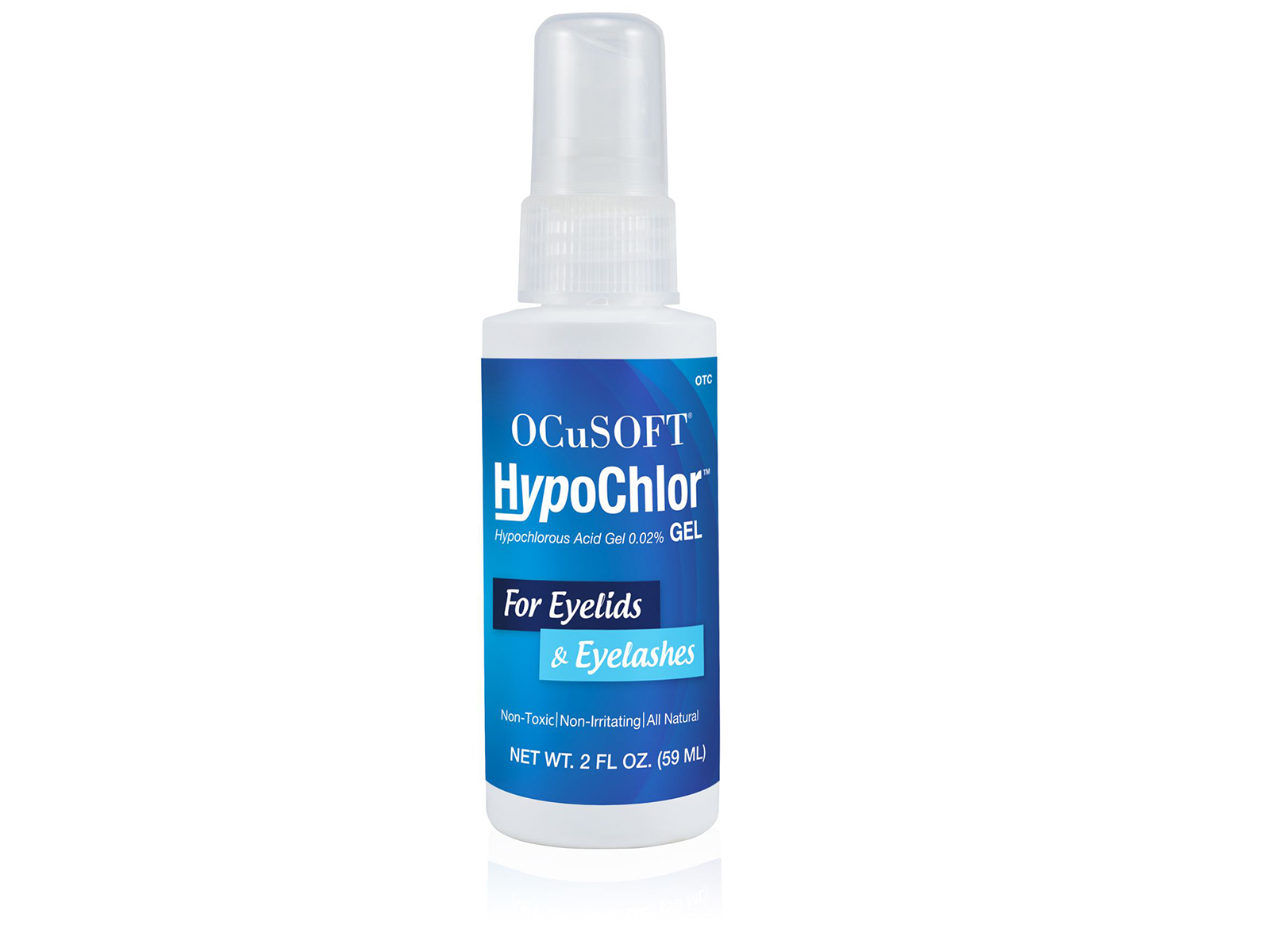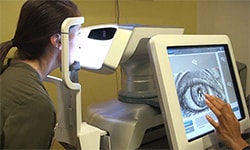Editorially Independent Content
Hypochlorous acid is a relatively new addition to the eye care market and is now available as a topical gel or spray-on formulation for ophthalmic applications. A 0.02% concentration of the acid solution is contained in OCuSOFT HypoChlor Gel .02% (OCuSOFT) and OCuSOFT HypoChlor Spray .02% (OCuSOFT).
How It Works
Hypochlorous acid is unique in that it is actually produced naturally by white blood cells in the body in response to infections. It can both neutralize bacterial pathogens and control the inflammation that is associated with them. This product has been used for a number of years for the sanitation of hospital-based equipment and the treatment of wound care—acute wounds such as burns and lacerations and chronic wounds like diabetic ulcers.
We recommend HypoChlor Gel and HypoChlor Spray as adjunctive therapy to a normal lid hygiene regimen. Particularly, we recommend this for patients who have: (1) obvious signs of microbial infection or overgrowth; (2) a very recalcitrant, resistant blepharitis situation; or (3) associated ocular surface disease. This is not intended to take the place of a surfactant cleaner. Cleansers like OCuSOFT Lid Scrub Plus are essential for removing the oils and dirt that accumulate on the lid margin, whereas HypoChlor is beneficial for bacterial overgrowth.
Even though HypoChlor is not classified as an antibiotic, we know from the literature that hypochlorous acid solution is beneficial against biofilm formers and other very resistant bacteria. In some clinical studies it eradicated 99.9999% of the bacterial population tested in a matter of just minutes. It was effective against many common species of bacteria that we encounter as the normal microbial flora, such as Staphylococcus epidermidis, Staphylococcus aureus, methicillin-resistant Staphylococcus aureus (MRSA), and Streptococcus species. It is important to be able to use something like this in lieu of antibiotic solutions, antibiotic ointments, or antibiotic-steroid combinations, which can be much costlier, have more toxicity issues, or develop resistance over time when used in chronic infections.
Perioperative Applications
Although we use HypoChlor primarily for patients with blepharitis, this could also be an effective perioperative strategy for patients who are undergoing cataract or refractive surgery. Reducing the bioburden on the lid margins and around the ocular surface is very important to surgical outcomes. We recognize the stable tear film is essential for good outcomes in these patients as well. Often we can recommend this in lieu of antibiotic solutions or other therapies that might be more costly. We will recommend patients use something like HypoChlor twice daily for a period of about a month prior to surgery. This has great capacity to improve the outcomes and has great patient compliance because it is part of the normal cleansing regimen.
Noteworthy Qualities
HypoChlor Gel and HypoChlor Spray are, in my opinion, as good, if not better, than the other competitor in this category. The other product is a .01% concentration of hypochlorous acid solution. The difference in concentration alone does not make it that much better, but there are other distinct advantages on the HypoChlor side. First, it's available without a prescription, so patients can access it much easier. Secondly, the cost difference is substantial. HypoChlor is generally less expensive. Most importantly, the shelf life of HypoChlor Gel and HypoChlor Spray is very long. While other brands must be used within 30 days of being opened, HypoChlor has a shelf life of 18 months. Patients who feel the need to use this sporadically, who may not use it up otherwise in 30 days, have the capacity to stretch this out much longer. For that reason it becomes much more economical.
One of the nice things about HypoChlor is that it can be purchased and sold directly from eye care practices to patients who need it. If stocking the product complements your practice modality, offering these products direct to patients can provide an additional revenue stream that doesn't depend on fees or insurance reimbursement. In addition it makes it much more convenient for the patient because they don't need to go to a pharmacy or order the product online. This convenience translates into greater compliance for the patient.
Passing the Smell Test
Practitioners should be aware that this solution has a very unique odor, and while it's not an offensive odor it is something that patients will remark about. Because of the ingredients, it has the tendency to smell like a chlorinated swimming pool or a hot tub. Rather than let patients find this out on their own, we allow them to sample this in the office. We let them smell it, touch it, and even dab it on their eyes so they understand that, despite the smell, it really is very comfortable and easy to use. This primer helps to improve compliance with this product.
In Summary
HypoChlor really does help us to improve patient compliance and patient outcomes. We can avoid prescribing unnecessary antibiotics that may predispose a patient to resistance or have toxicity issues. We can avoid the use of corticosteroids to suppress inflammation that can also have some negative effects on the ocular surface. HypoChlor Gel and HypoChlor Spray are non-toxic and for most patients there is virtually no stinging or negative sensation. Personally, to me it feels the same as if I were to use water or saline to clean around my eyes.






